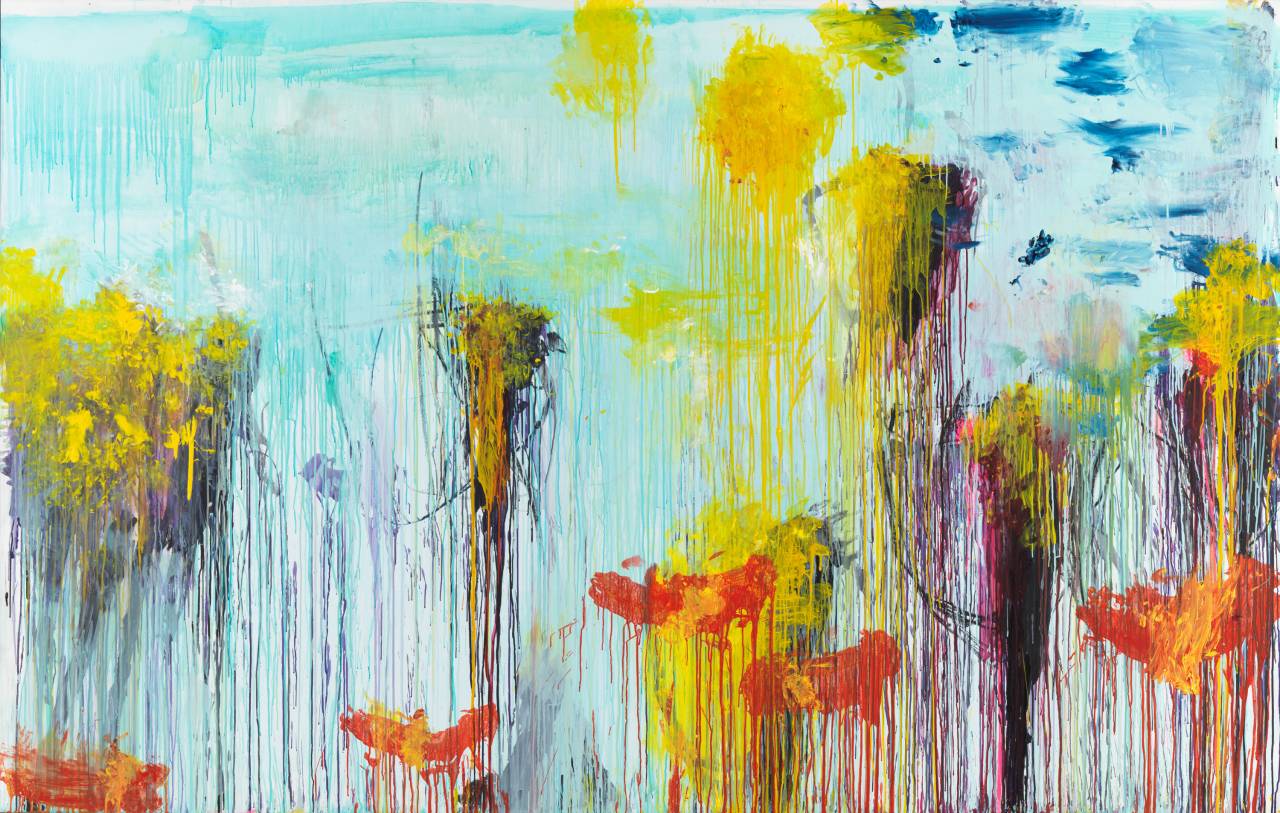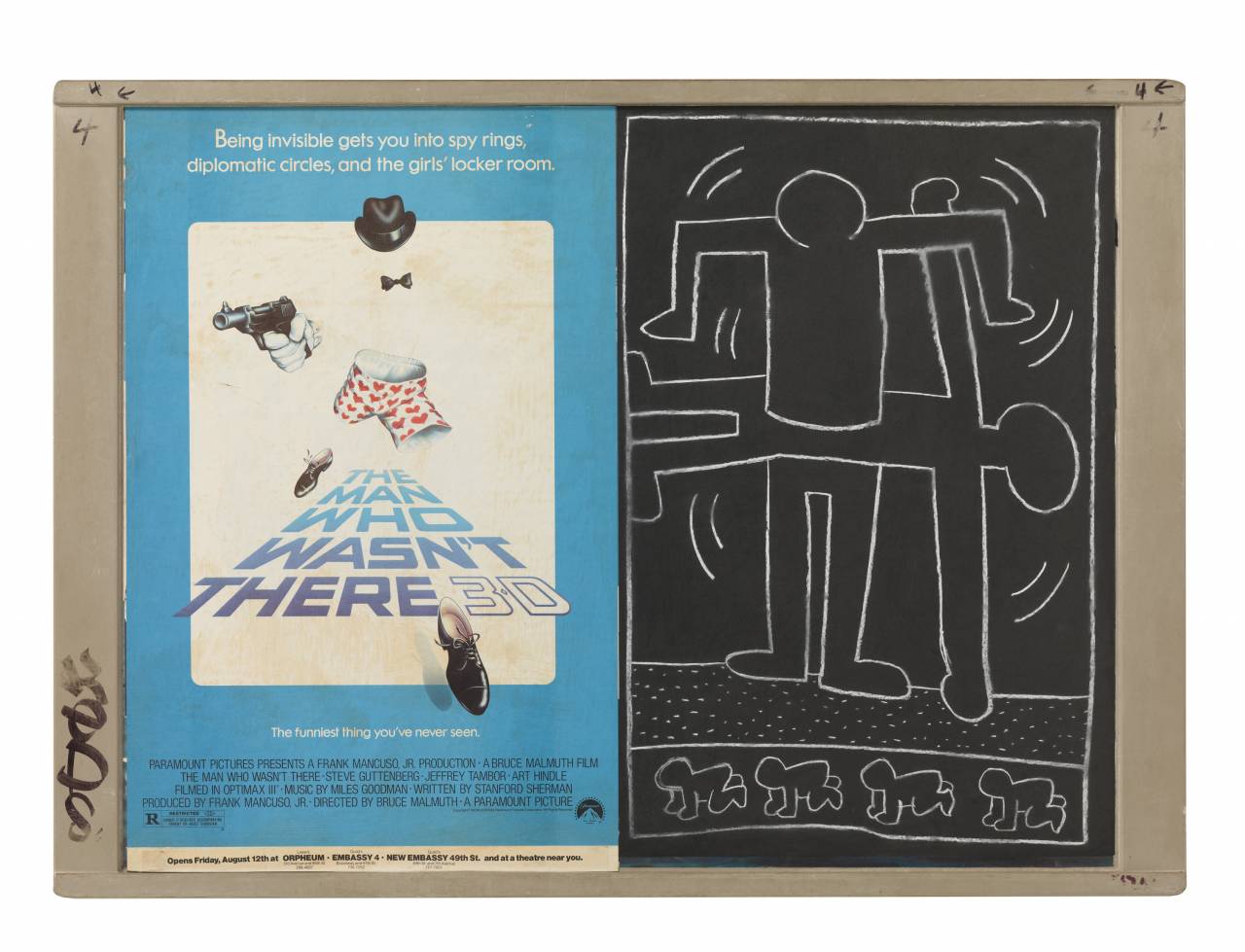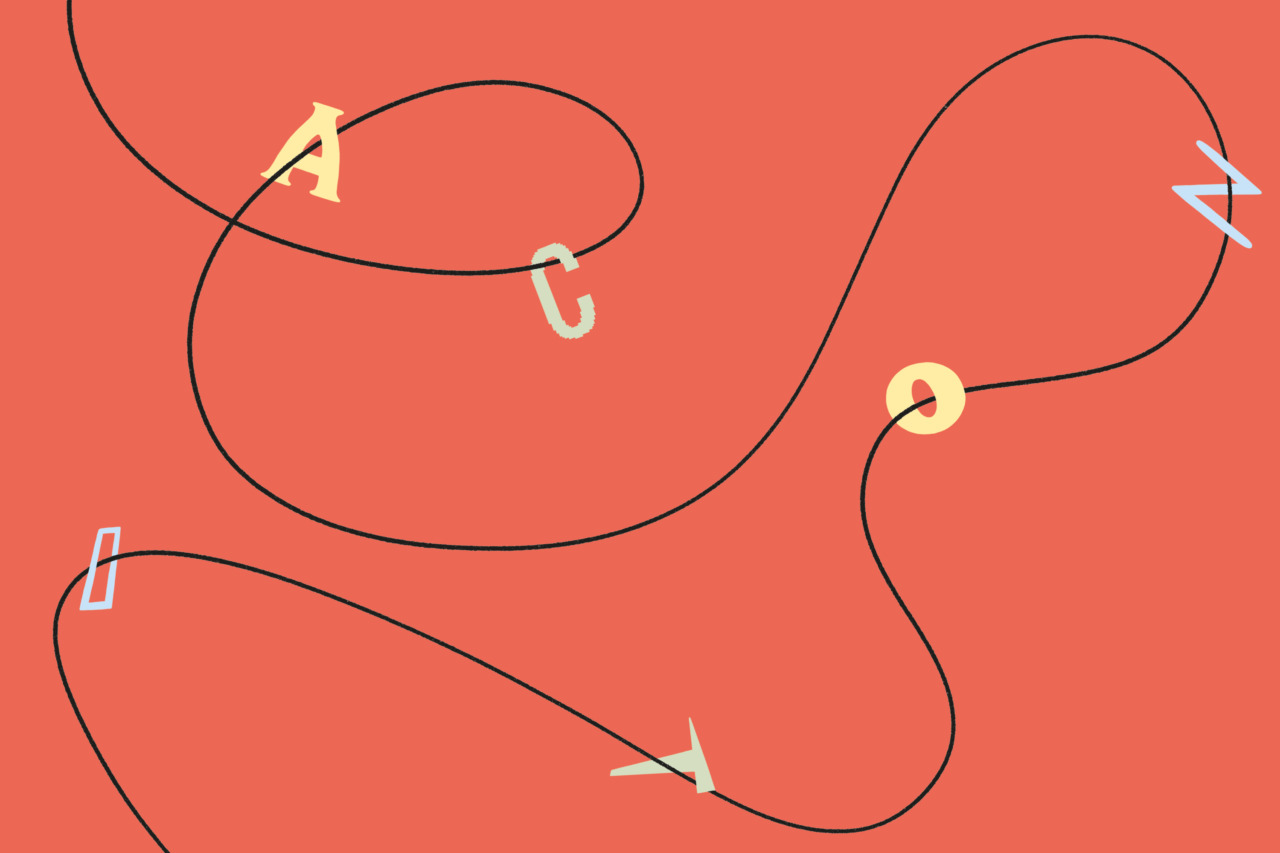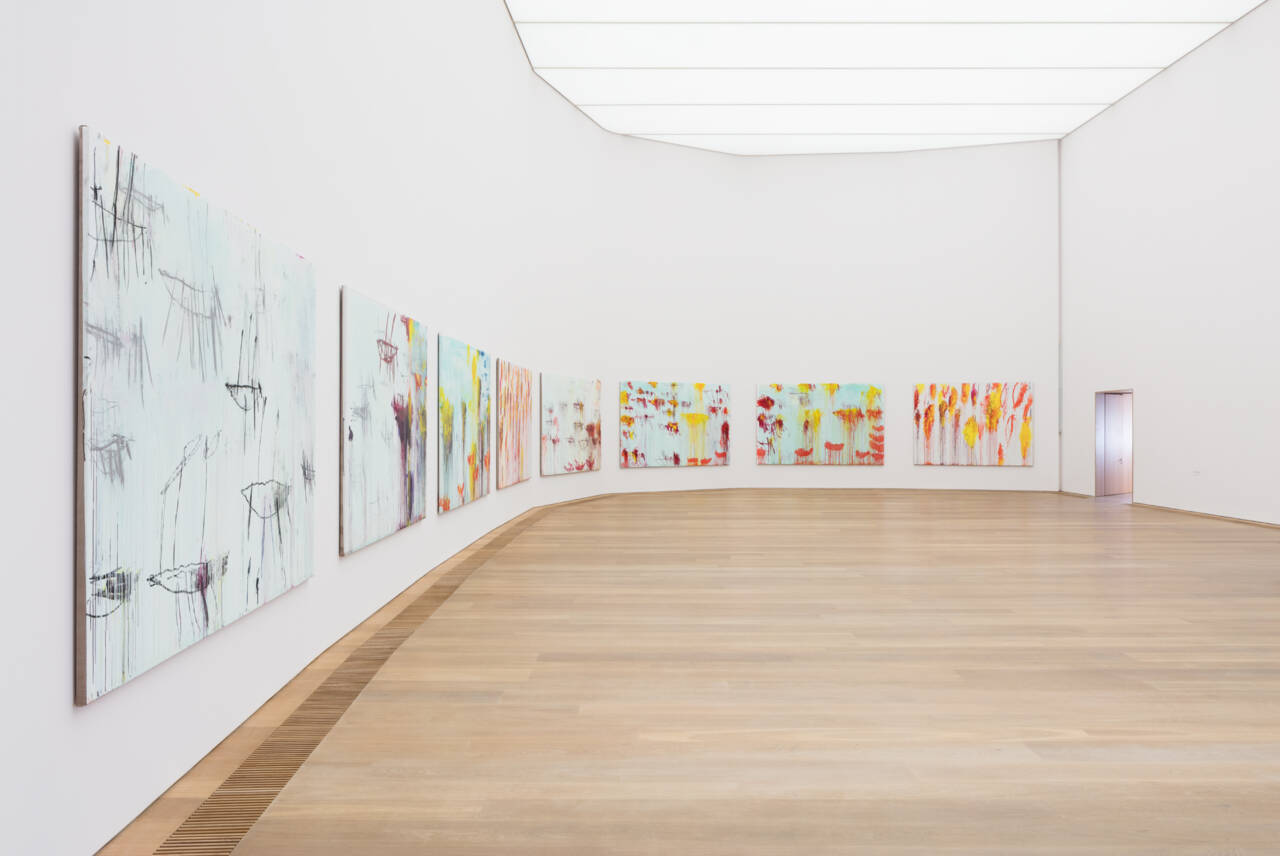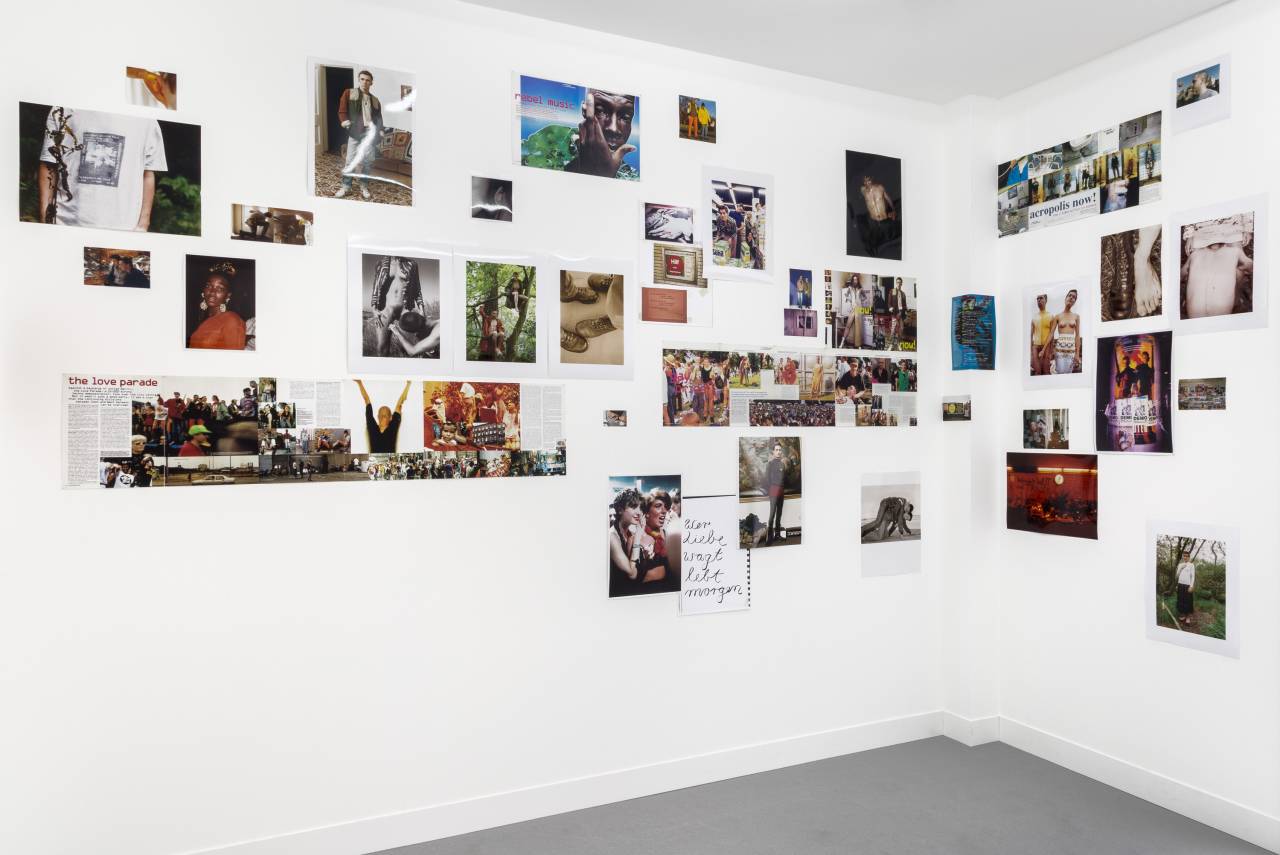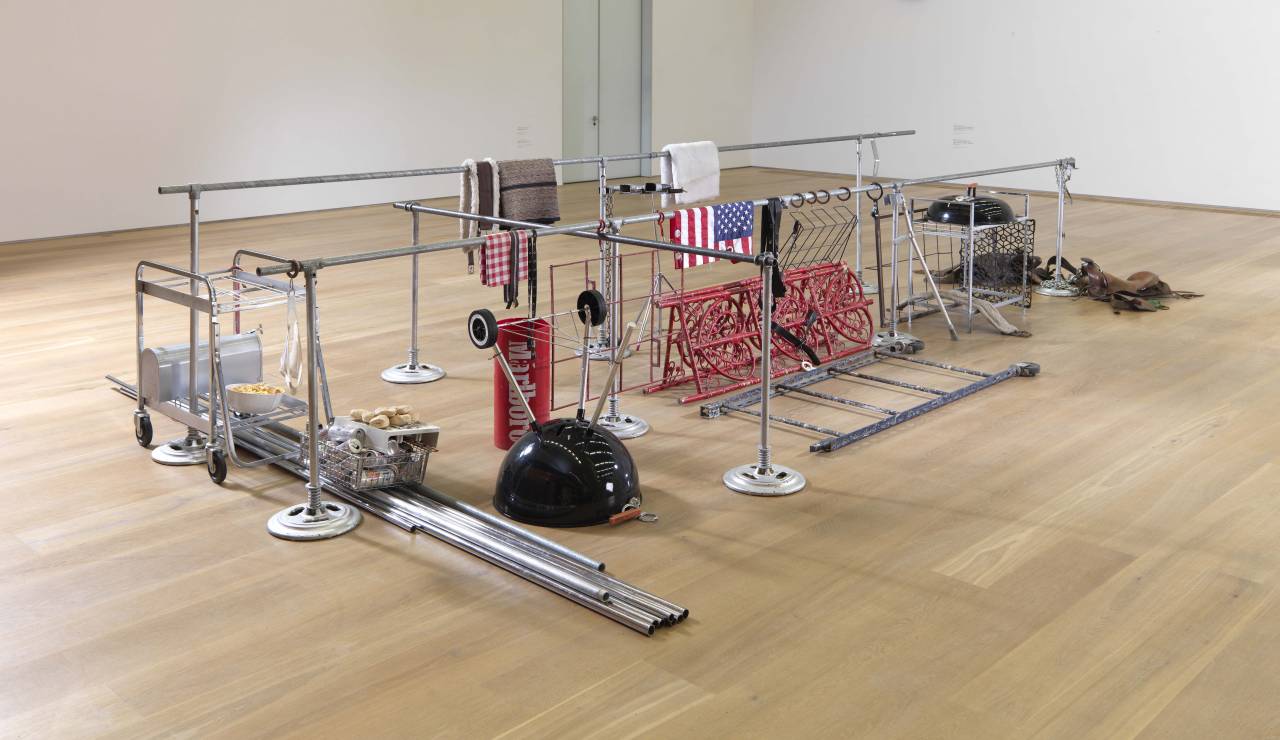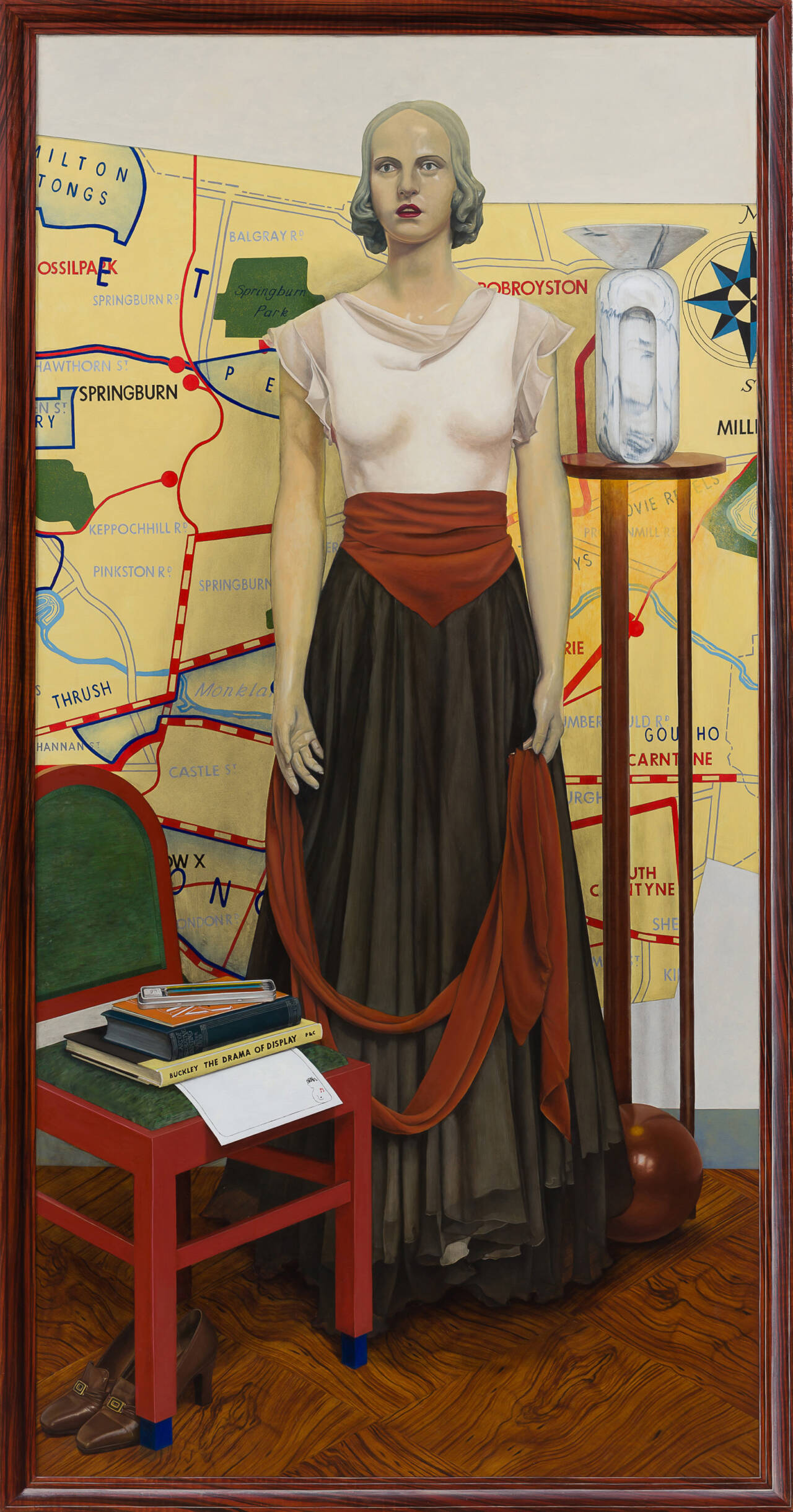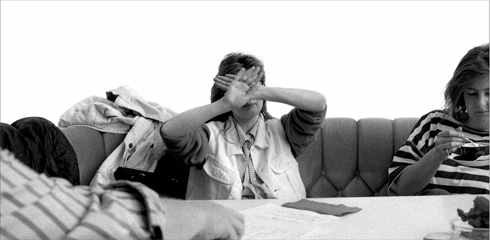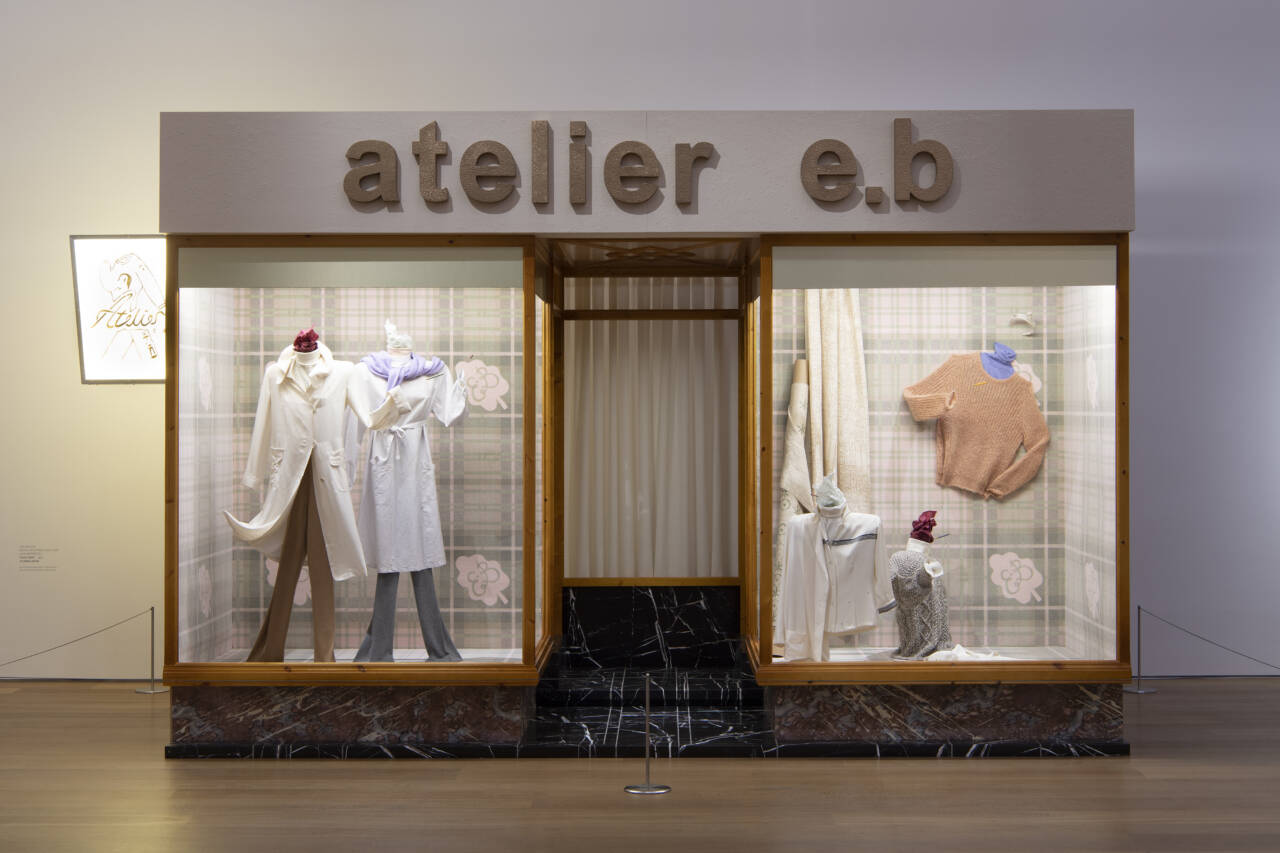Space
Whether public space, private collection or museum—art appears in many places. What role do location and space play in contemporary art? The dimension and nature of the artwork also play a role. What space does a three-dimensional sculpture occupy as opposed to a work on paper or canvas? How does art change space and space change art?

What can a space be and entail?
Does a space need four walls, a solid floor and a secure roof, or do spaces also emerge with fewer or different forms of infrastructure? What and who shapes places and spaces besides physical conditions? What has an effect on them? Art often plays with different facets of spaces and places—as do the following works and artists.
What kind of space does art occupy?
Do you find art in parks, in schools, on the streets? What do these places have in common and how do they contribute to a different experience of art? Do you know any artists who work in both public spaces and museums? Can different spaces be connected through art?
How do you feel when you enter a contemporary art museum?
Enter such a museum in your mind. What do you notice about the place? What materials, smells, or sounds? Museums often have unique architecture and furnishings—why do you think that is? What is essential for a contemporary art museum in order for it to function? What does this space enable and what does it exclude?
What does art need or take from space? What does the space give to the artworks?
The interactions of space and art influence our experience of art. Can you remember a situation where each communicated with the other, leaving a strong impression on you? In Museum Brandhorst, one room is dedicated to just twelve specific paintings. Does this moment remind you of another architectural situation?
Have you ever thought about “invisible” spaces?
Invisible spaces often become visible, or rather conceivable, through special codes. For example, in the work “Rebecca” (2019) by Lucy McKenzie or in the installation “Deep Social Space” (1989) by US artist Cady Noland. By choosing certain materials or methods, both artists refer to mental, cultural, or political spaces that occur elsewhere spatially, geographically, or historically.

